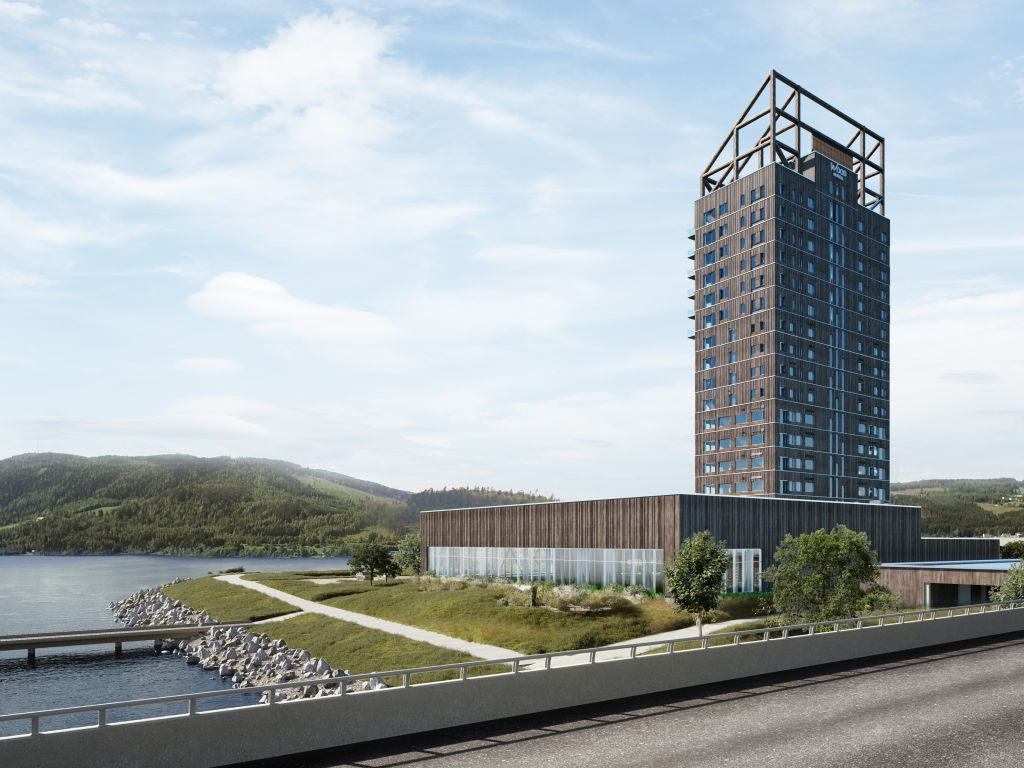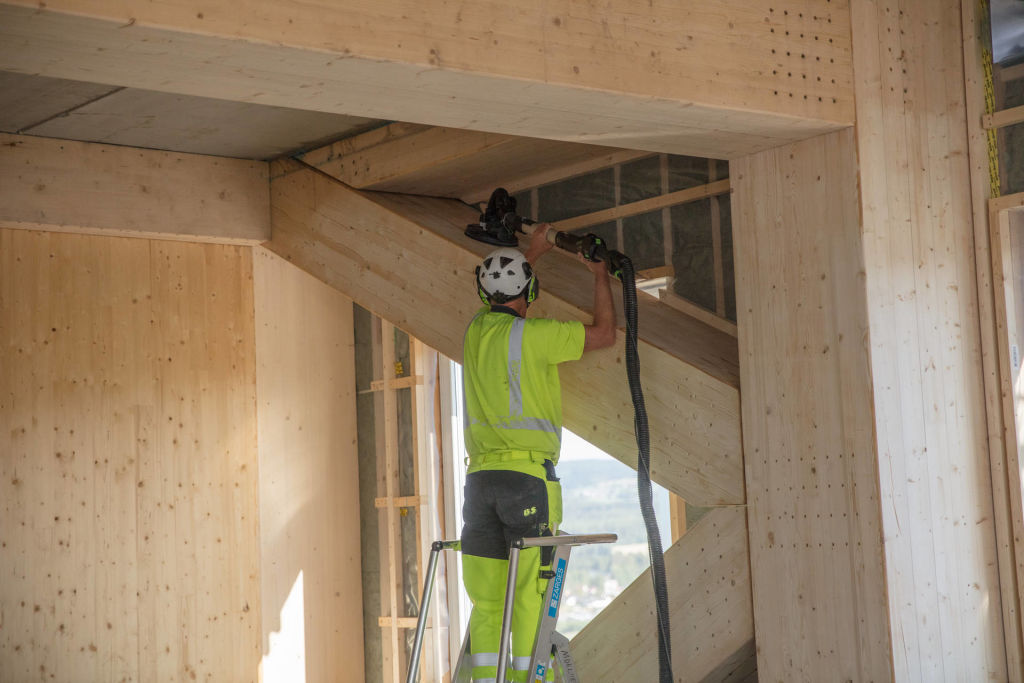Meet the 'plyscraper': Construction complete on the world's tallest tower made of wood

Construction has recently completed on the world’s tallest building made out of timber, also known as a “plyscraper”, in Norway.
Standing at an impressive 85.4 metres and rising 18 storeys, the building is constructed from a product known as mass timber, which is created by gluing layers of timber together at high pressure to create thick beams.
It was designed by Voll Arkitekter and is known as The Mjösa Tower. The name comes from the lake it borders – Norway’s biggest, Lake Mjösa. While the building will be used mostly for offices and apartments, it also houses a hotel overlooking the lake.
The previous record-holder was a student residence at the University of British Columbia in Vancouver, which stood at 53 metres.
Philip Oldfield, senior lecturer in the faculty of the built environment at UNSW, says there are plenty of benefits to building multi-storey buildings with mass timber in this way.

“The first is environmental. Both steel and concrete have a huge environmental footprint. Cement, for example, is responsible for eight per cent of all global carbon emissions,” he said.
“That’s more than any country in the world, more than the whole of Australia, and more than India. And that’s obviously a main material in our built environment.
“Timber on the other hand actually absorbs carbon during its lifecycle, so it’s as not as carbon intensive as steel and concrete. Timber multi-storey buildings have a lower embodied carbon, [which refers to] carbon in the structure itself.”
He says timber buildings also offer much more flexibility and ease of use in the building process.
“We can prefabricate timber buildings,” he said. “We can build much of the components in factories anywhere in the world.”
“A lot of these buildings are built in central Europe, built out of pieces, taken to site, and then fixed together in an almost primitive way with just screws and bolts – unlike concrete which has to be poured and set.”
Using timber as the primary building material can also change the way we experience a building. Indeed, there is some evidence to suggest timber buildings can destress occupants by creating a more natural environment, although Dr Oldfield is quick to point out that research on that topic is ongoing.

There are a few examples of timber multi-storey buildings in Australia. The Forte Living apartments in Melbourne stand at 32.2 metres tall, while International House in Sydney was the country’s tallest commercial plyscraper for some time.
More recently, 25 King in Brisbane’s Fortitude Valley took the title of Australia’s tallest engineered timber office building, standing at nine storeys.
So why don’t we see more timber buildings in Australia? Dr Oldfield says the main barrier for entry is a risk-averse industry.
“No one really wants to be the first person to do something,” he said. “But now we’ve got two or three projects: we’ve got a multi-storey residential, we’ve got three or four multi-storey timber buildings emerging. Developers, contractors, and clients are all seeing the advantage of this technology.”
There have also been regulatory changes in recent years. Before 2017, any timber building over three storeys was subject to more rigorous approval testing. That limit has been moved to seven or eight storeys.
Despite this, people often have concerns about the longevity and safety of timber buildings. In particular, Dr Oldfield says many people have concerns about what happens if a timber building catches fire.
“It may seem counterintuitive, but mass timber is a high-performance material in a fire scenario,” he said. “There has been a large amount of tests on mass timber, and what happens is much like what would happen to a tree.”
“The outside burns and it would char, and that char creates an insulating layer. All you need to do to get effective fire performance is oversize the timber, it will char in a fire, and actually, the building will remain safe.”
We recommend
We thought you might like
States
Capital Cities
Capital Cities - Rentals
Popular Areas
Allhomes
More







